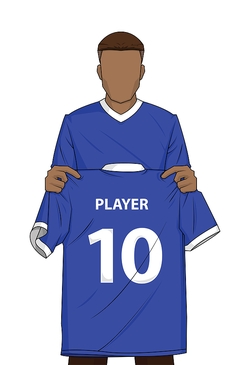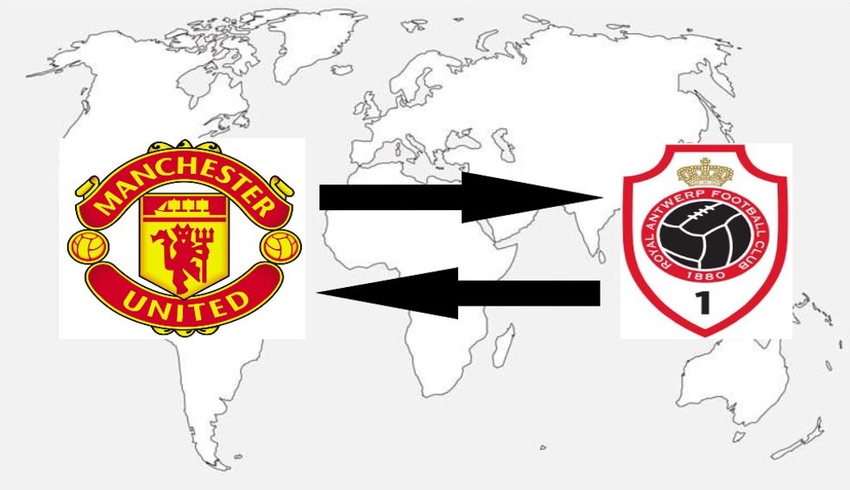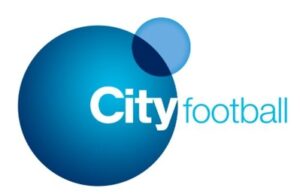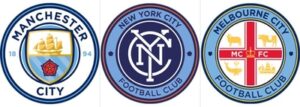 A top tier football club in the Premier League can register a squad of 25 players who the manager can use in any way they like to field a team and win matches.
A top tier football club in the Premier League can register a squad of 25 players who the manager can use in any way they like to field a team and win matches.
While the line ups may change from game to game, the players in the squad are fixed for the season.
However, that doesn’t mean the club can only employ 25 players, they can employ as many as they like. And what they do with the ones that aren’t in the official squad is up to them.
All clubs, especially big clubs, want to get hold of rising stars while they are young so they tend to sign promising youngsters from a very early age and develop them at their academies. At some point, they will either be good enough to progress up the ladder or it will become apparent that they are not living up to their initial promise and they will be let go, or another club might take them on.
Older players who are maybe a year or two off being ready for the big leagues might also be sent out on loan to smaller clubs in order to build up their experience playing competitively rather than just in training.
This means there are an awful lot of players moving around behind the scenes that the regular punter probably wouldn’t know anything about.
There is another reason why clubs take on so many young players though – some clubs will employ a player with absolutely no intention of ever playing them. Why? To make money. In today’s world players are looked at almost like stocks and shares: buy low, sell high.
Here you can read about what goes on at football clubs that you don’t see on the pitch.
Why Players go Out on Loan

The original idea was to give players experience, build their confidence, and keep them match fit.
A player who wasn’t quite strong enough to break into the first team but showed a lot of promise might just be able to kick things up a notch or two after a season away at a club one league down.
What’s more, often the club on the receiving end of the loan would cover all or part of the player’s wages, so the club the player was contracted to then made a saving on the wage bill and got a player back who was, hopefully, better than when they left.
The club the player was loaned to got an extremely talented player for a season without having to pay a transfer fee which they probably couldn’t have afforded even if the deal could have been made.
Officially known as a ‘temporary transfer’, loans were a win win.
However, savvy clubs soon realised they if they sent a player out on loan and they improved, their transfer value would go up. Not only that, but they hadn’t been paying that player’s wages all season so it hardly cost them anything either.
That meant that selling the player would essentially give them a profit for nothing.
This happy accident was ripe for exploitation, and with the rules around outgoing player loans pretty slack to say the least, some clubs set to work to industrialise the practice and turn it into a money making player trading business in its own right.
Players do still go out on loan for legitimate reasons of course, but a large percentage of loan deals these days also exist as part of a bigger profit hungry cycle.
Chelsea: A Case in Point
 Chelsea have long been known to farm out their players to various different (often European) clubs in order to give them exposure then sell them on. They even had a formal arrangement with Dutch club SBV Vitesse (owned at the time by an associate of Roman Abramovich) to this end.
Chelsea have long been known to farm out their players to various different (often European) clubs in order to give them exposure then sell them on. They even had a formal arrangement with Dutch club SBV Vitesse (owned at the time by an associate of Roman Abramovich) to this end.
They still carry the reputation of having a ‘loan army’ in the UK, although they are no longer the only ones at it.
Between 2012 and 2017, it is estimated that Chelsea made almost £108 million profit from holding and loaning out 20 different players and then selling them on. That’s a pretty good 5 year return, although it included Kevin de Bruyne who they probably wish they kept, Mo Salah who has netted against his former club several times for Liverpool, and also Romelu Lukaku, who they eventually bought back.
Most players don’t go on to have such celebrated careers though, and in some cases the endless cycle of swinging doors as they go from club to club can even ruin a promising career.
Lucas Piazon was Chelsea’s longest serving player when he finally left the club in 2021, having been signed as a 17 year old in 2011 and winning their Young Player of the Year award as well as the youth FA Cup in 2012.
Ironic when you consider that a string of managerial changes and big money signings meant that he spent a crazy 9 seasons in a row out on loan, only pulling on a Chelsea shirt 3 times in his decade with the club.
His loan spells went like this:
- Malaga – 2012/13 – 14 games, 0 goals
- Vitesse – 2013/14 – 31 games, 11 goals
- Frankfurt – 2014/15 – 23 games, 2 goals
- Reading – 2015/16 – 27 games, 5 goals
- Fulham – 2016/17 & 2017/18 – 58 games, 12 goals
- Chievo – 2018/19 – 4 games, 0 goals
- Rio Ave – 2019/20 & 2020/21 – 36 games, 6 goals
The Brazilian winger spent virtually no time in West London during all the years he was contracted, and eventually left for Braga aged 26.
This is just one example of many.
In the 21/22 season Chelsea had 77 players at the club, and 52 of those contracted didn’t make the first team. By the start of 2022, Chelsea had already agreed 22 different loan deals.
Here’s how the other teams stacked up at the beginning of that season in terms of loan deals. The clubs may have had more players available than the number shown, but this number includes the senior squad plus any U21 players who were contracted or scholars:
| Team | All Players | On Loan |
|---|---|---|
| Arsenal | 84 | 20 |
| Aston Villa | 74 | 18 |
| Brentford | 53 | 7 |
| Brighton & Hove Albion | 79 | 22 |
| Burnley | 69 | 7 |
| Chelsea | 77 | 22 |
| Crystal Palace | 74 | 3 |
| Everton | 76 | 5 |
| Leeds United | 67 | 11 |
| Leicester City | 73 | 9 |
| Liverpool | 77 | 13 |
| Manchester City | 85 | 35 |
| Manchester United | 77 | 17 |
| Newcastle United | 72 | 7 |
| Norwich City | 73 | 20 |
| Southampton | 73 | 10 |
| Tottenham Hotspur | 77 | 7 |
| Watford | 76 | 24 |
| West Ham United | 66 | 6 |
| Wolverhampton Wanderers | 75 | 21 |
So as you can see, Chelsea might be the ones who are notorious for talent hogging, but they are no longer the only ones at it, with Man City way out in front and Watford surprisingly busy on the loan front as well.
Chelsea might not be the biggest culprit at the moment, but they are still essentially just hoarding talented players, which means Chelsea can control if they play and who they play for, thus stopping rival teams getting their hands on them.
This said, none of the teams in the UK are a patch on the likes of Parma and Juventus, who have both had between 150-200 players out on loan at the same time at various points in the past.
Feeder Teams or Farm Teams

So ingrained is this culture of loaning out players that some teams even have official (and unofficial) arrangements with smaller clubs whereby promising youngsters are sent out annually as if on a conveyor belt.
Sometimes this is beneficial for both clubs and the player, but other times it can be disastrous.
Manchester United had a well known partnership with Royal Antwerp in Belgium back in the 90s/2000s, sending 30 of their youth team players to the club over 15 years to spend a season playing first team football and gaining valuable experience – John O’Shea was one of them. This was not about raising the value of these young players, but about bringing them on and improving them, and all of them went on to play in the Premier League at some point.
It was also a useful link when buying foreign players who struggled for a work permit, as the rules were much laxer there than in Britain. A person could live in Belgium for 2 years and be given a Belgian passport, making them eligible to work anywhere in Europe. This was when the UK was still part of the EU, so it meant a player could come and play in the UK much sooner than might otherwise be possible.
A few other feeder team partnerships for UK clubs past and present include:
| Team | Feeder Teams |
|---|---|
| Tottenham Hotspur | San Jose Earthquakes (USA) |
| Arsenal | Colorado Rapids (USA) |
| Chelsea | Vitesse Arnhem (Netherlands) |
| Liverpool | FC Genke (Belgium) |
| Leicester City | OH Leuven (Belgium) |
United’s rivals Manchester City also have a number of feeder teams, but the difference is that they are all owned by the same parent company, City Football Group.
This is most definitely all about business first and football second, with their most famous success story – in terms of profit at least – being Aaron Mooy.
Mooy was playing for Melbourne, a club owned by City Group, when Man City signed him for an ‘undisclosed fee’. Literally 6 days after pen was put to paper he was loaned out to Huddersfield for the season.
After playing well for the Terriers they ended up putting in a club record breaking bid for Mooy’s services permanently, forking out £10 million in the end. That’s a huge profit for City who did absolutely nothing to deserve it – Mooy didn’t even have time to train with them let alone play for them.
This has been repeated many times with other players too. Basically, a scout will see value in a player, City sign them for peanuts, loan them out immediately and let some other club pay their wages and develop them, then when they have improved in ability and value, City sells the player for a profit.
Football Groups or Multi Club Ownership
Things have progressed even further than strategical loan spells, in that there are now individuals or business groups that own various football clubs, all using each other to enhance their fortunes on and off the pitch.
They can use the rules and laws in one country to get around the rules and laws in another, or use loan spells to send high calibre UK based players to low competition leagues elsewhere in the world, where their presence will greatly increase the loan team’s chances of success on the pitch, and also increase the player’s transfer value.
This really does take the heart and soul out of the game, and makes the idea of home grown talent almost impossible to achieve. Worst of all, it turns footballers into pawns, seen as commodities rather than talented human beings.
Two of the biggest football groups out there are City Football Group and Red Bull, but there are others on the horizon.
Leicester City are owned by King Power International Group who also own Belgian club, Oud-Heverlee Leuven; while the Pozzo family own Watford and Udinese, and there are a good handful more besides.
City Football Group
 We mentioned City Group above, and it might have been news to some readers that Manchester City are actually part of a larger business group. City are by far the biggest club in the group, often called the ‘parent club’, but still, they are ultimately owned and administered by City Football Group.
We mentioned City Group above, and it might have been news to some readers that Manchester City are actually part of a larger business group. City are by far the biggest club in the group, often called the ‘parent club’, but still, they are ultimately owned and administered by City Football Group.
It all started when Abu Dhabi United Group purchased 90% of the club in 2008, making the team the richest in the world overnight. The ambition was to make the club self sufficient and build a structure for European domination, which was achieved.
UEFA regulations on spending forced the group to think differently though, and this is when they got involved with a start up team, New York City FC, kick starting the idea of a multi club approach which ultimately led to the formation of the City Football Group.
Other teams owned by the group include:
- New York City FC – USA
- Melbourne City – Australia
- Yokohama F. Marinos – Japan
- Montevideo City Torque – Uruguay
- Girona – Spain
- Sichuan Jiuniu – China
- Mumbai City FC – India
- Lommel SK – Belgium
- ES Troyes AC – France
You can see that they are really spreading themselves out, creating a network of clubs all over the world that can ultimately be used in many different ways to help each other become financially successful.
 They have technically created a brand, you can see it in their clubs’ badges, that can be exported, and this allows them to create commercial partnerships and sponsorship opportunities, academy operations including far reaching scouting networks, as well as getting around 3rd party ownership problems where players are concerned.
They have technically created a brand, you can see it in their clubs’ badges, that can be exported, and this allows them to create commercial partnerships and sponsorship opportunities, academy operations including far reaching scouting networks, as well as getting around 3rd party ownership problems where players are concerned.
This approach has been compared to Disneyfication; the idea that football can be franchised and turned into entertainment content that can be monetised in as many different ways as possible.
The interesting thing about City Group is that it is partly led by former Barcelona Economy Vice President, Ferran Soriano, who was instrumental in attracting Pep Guardiola, the one time Barcelona manager. His appointment led to City’s most successful period ever, and his lesser known brother, Pere Guardiola, has many business interests in the clubs under City Groups umbrella too.
It is a complicated web of inside dealings but all ultimately run to make people richer.
Red Bull
 The famous energy drinks company sponsors sports of all kinds, and owns teams in motorsports, ice hockey, and esports. They don’t just make funny cartoon adverts.
The famous energy drinks company sponsors sports of all kinds, and owns teams in motorsports, ice hockey, and esports. They don’t just make funny cartoon adverts.
As far as football is concerned though, they started off buying SV Austria Salzburg in 2005, but quickly changed the name to Red Bull Salzburg. They then bought FC Liefering specifically to act as a feeder club for Salzburg, and they are now basically a reserve team for the club.
Much like City Football Group, they have gone on to purchase clubs on different continents with the aim of sourcing top talent cheaply, signing them up, then shipping them off somewhere that will improve their quality and value before using them or selling them on.
Other teams owned by Red Bull include:
- New York Red Bulls – USA
- Red Bull Brasil – Brazil
- Red Bull Bragantino – Brazil
- Red Bull Leipzig – Germany
Red Bull Ghana was another team they had but they are defunct as of 2014.
As you can see, the Red Bull branding has been added to every team they own, so this really is all about branding over football. It has caused tension with the fans in most cases too, who object to their beloved team being rebranded in such a way, but for teams like Salzburg at least, Red Bull’s ownership has brought plenty of domestic success.
 The group employ a Head of Football who essentially tells the managers how he wants clubs within the group to play, and this creates a Red Bull ‘style’. This also goes some way to explaining why 30% of transfers at Red Bull clubs are to and from each other.
The group employ a Head of Football who essentially tells the managers how he wants clubs within the group to play, and this creates a Red Bull ‘style’. This also goes some way to explaining why 30% of transfers at Red Bull clubs are to and from each other.
If a player already plays the Red Bull way, then added to the other benefits of transferring between linked clubs already discussed in this article, keeping players within the group as they mature makes a lot of sense.
They can also make a lot of money when they eventually sell a player, as they did with Naby Keita in 2017. Keita was bought by red Bull Salzburg for £1.25 million in 2014, and then by Red Bull Leipzig for £25 million in 2016. No doubt this transfer was under market value given that the two clubs are partners, not to mention cost savings on contract re-negotiations etc.
Two years later, in 2018, Liverpool took him off Leipzig’s hands for £50 million, meaning a cool £25 million profit.
Are Football Clubs Failing Young Players?
 The psychological impact on perpetual loanees should not be ignored here.
The psychological impact on perpetual loanees should not be ignored here.
Players who are signed at an early age are still vulnerable, as much as they would probably hate to accept that, they are not even old enough to drink or vote a lot of the time, yet they are subjected to a life full of pressure and uncertainty.
What’s more, they have their freedom taken away to some degree, because the club own their services at what is the most crucial point in their careers. If they are unhappy, it’s tough.
A club can destroy a career by not nurturing players properly and consistently sending them off to play elsewhere. Football is not the same all over the world, different leagues suit different players, and not only that, but having a new manager to play for every season can be a real challenge as there is no time to adapt and really bed in.
Sure, the player might go up in value by a few million quid and make the club’s balance sheet look healthier, but what about the young person whose life is being toyed with, who can’t build a home or put down roots? What about their aspirations, ambitions, and their potential for the future? What about their families?
Once a player is sold or released/retired they are no longer the responsibility of the club, who can wash their hands of them and never make contact again, and there are more than a few cases of mental health problems because of this, some ending in tragedy.
Manchester United’s famous Class of ’92 all came through the youth system, and there were plenty of others alongside them who did ok too. Would that be possible today with the way some clubs approach their academy and reserve side? It doesn’t seem likely.
These days, many clubs look for short term money making opportunities instead of investing real time to develop their youngsters, and this hamstrings players who could otherwise have gone on to become the next Ryan Giggs or Paul Scholes. The odds of a young player making it through the rank and file to the first team are now incredibly low at places like Chelsea, and that must have a psychological impact.
There is no onus on the clubs to support a player who might be struggling to cope after they have been signed, tossed around, then sold on; but something has to change here, either at one end of the process or the other.